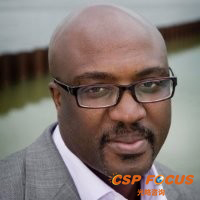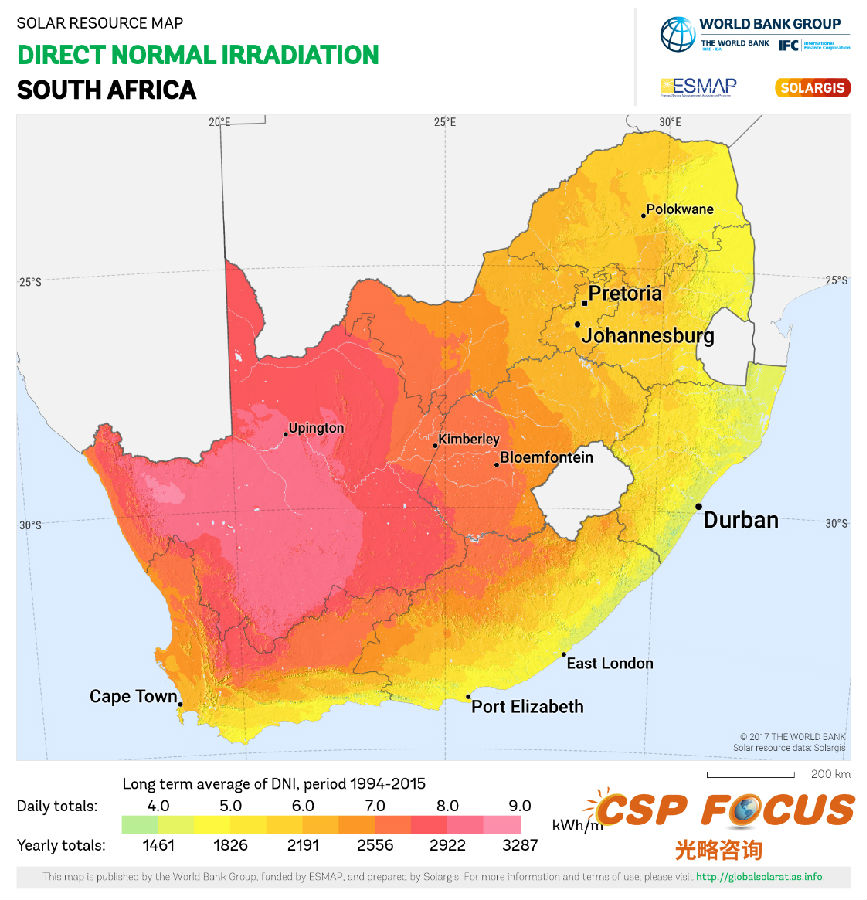A Word with Pancho Ndebele, Founder & CEO of Emvelo, Chairman of the Southern Africa Solar Thermal and Electricity Association (SASTELA)
2018.05.04 From: helioscsp
Renewable energy entrepreneur and CSP pioneer in South Africa, Pancho Ndebele, talks about the prospects of Concentrating Solar Power and highlights lessons that other countries could draw from South Africa’s renewable energy experience.
By Carlos Márquez

CM. South Africa ran its renewable energy procurement program, that included 600 MW of CSP, and then suddenly stopped in 2016. What happened?
PN: When the renewable energy program initially started in 2011 the government had high expectations of local participation, job creation and industrialization arising from all renewable energy projects. Once the projects started, the reality was that these expectations were not being met.
The fact that South Africa’s economy contracted didn’t make matters better, because the country found itself with more generating capacity than it needed to cover demand.

Figure 1. Ilanga CSP Project in South Africa (Source: Sener)
CM. Lack of generating capacity was one of the reasons why South Africa started the renewable energy procurement program. How did the country find itself at overcapacity in a matter of five years?
PN: When the renewable energy program started in 2011, we had 40,000 MW installed in South Africa, and the plan was to double capacity in 2025-2030. This assumed that the economy would grow between 3% to 5% per year. But then the economy started contracting and so did electricity consumption. At the same time, two new mega coal-fired power plants, Madupi and Kusile with a combined capacity of 8000 MW were being built and some of the units came online.
The reason Eskom [South Africa’s public utility] has capacity is because the economy has contracted so the big guzzlers of electricity, the mines, are not consuming as much. Now they have surplus energy but not adding new capacity would be shortsighted. If the economy starts growing, we could start having the rolling black-outs that we used to have. Also, some of the current coal generating fleet is coming to the end of its useful life. In the energy sector you need to plan for the long term because it’s a long-term game.
CM: What is the status of the renewable energy procurement program now?
PN: The new administration sees renewables as part of the solution to kickstart the economy. And they know that, as a country, it is in our interest to honor the 27 projects that got preferred bidder status in previous rounds of the renewable procurement program. Beyond these projects, the government knows there needs to be certainty on the future of the renewable energy program.
The renewable energy projects that obtained the green light in 2014 and 2015 were granted tariffs that were competitive back then. But now prices have gone down significantly so Eskom has asked the developers to bring tariffs in line to what they are now.
In general, these are positive developments, and everything indicates that there will be further rounds of renewable energy projects.

Figure 2. DNI Map of South Africa (Source: Solargis)
CM. You mentioned that participation of local companies in CSP projects wasn’t as high as expected. With the benefit of hindsight, what could have been done better?
PN: Lack of capital and high borrowing costs have kept many black-owned South African companies from participating in renewables. If you want to empower many previously disadvantaged people, which in South Africa means black folks, you need to make sure that capital is accessible to them.
Financial institutions and the government need to work together to come up with innovative funding solutions that enable the triple dividend: people, planet, profit.
Another recommendation for enabling job creation is to develop training and academic programs geared for renewable energy and the circular economy. That way, when you start your procurement program, you can then have professionals that are ready to work. Industry and government need to make an effort to communicate with young people so they understand the employment and business opportunities created by renewable energy.
Additionally, the government needs to provide companies with long-term stability and clarity. With, say, a clear view of ten years, international players will be more willing to establish manufacturing facilities and partnerships with local players, creating a win-win situation.
On the same vein, from the construction standpoint, a South African company could partner with an international company in a joint-venture. And as the local company learns they can eventually bid on their own then the government could assist local companies by providing certain guarantees in the early stages of the partnership.
“If you look at our challenges: job creation, accelerating industrialization, and providing clean, baseload and flexible power into the grid, CSP ticks all the boxes”
CM. What kind of guarantees could the government provide to local companies?
PN: The government can provide a letter of support that guarantees their scope of work. That way the local company can assume the levels of risk required to get involved in these projects and lenders will have enough confidence to have local contractors providing some of the scope. Perhaps by year three or four they wouldn’t need support anymore, but this could help establish black industrialists as solid construction companies.
CM. With PV prices being as low as they are now, does CSP still makes sense in South Africa?
PN. South Africa is one of the few countries in the Southern hemisphere that has the resources that best suit CSP. If you look at our challenges: job creation, accelerating industrialization, and providing clean, baseload and flexible power into the grid, CSP ticks all the boxes.
Soon the government should publish the Integrated Resources Plan (IRP) and then we will know the directions in which the country is going. If it provides a clear, credible plan for a significant renewable energy procurement program for the next ten years, I believe this will be a catalyst for economic development and re-industrialization in South Africa, Southern Africa, and the rest of Africa.
Relevant CSP Conference:CSP Focus MENA 2018(June 27-28,Marrakeck Morocco)
More from CSP Focus
NextHybrid CSP-PV gains create openings for 24-hour solar supply
China's CASEN to supply heliostats for first operational 247Solar Plant in Morocco
Sener and Masdar put Torresol's solar thermal plants up for sale
Sandia will compete to build a high temperature concentrated solar power pilot plant
Could Congress Commission a Government Agency Like WAPA to Build CSP?
Concentrated Solar Power will reach 20% of the energy matrix in Chile by 2050
Leave your thoughts here
Reports(Member Only)
See more+-
CSP Focus Membership Proposals
We are now proposing CSP Focus Membership, hoping to better serve our members to keep pace with the latest updates of ongoing CSP projects worldwide, and to establish and maintain business relations with major shareholders of the projects. CSP Focus offers to Membership exclusive access to:1. Daily/Weekly update and analysis on CSP policies, projects, technologies, market trend and corporate relea
-
The Latest CSP Focus Monthly Update
Join CSP Focus Membership to Get the Latest CSP Focus Monthly Update December Edition.
-
CSP Project Monthly Update 2022 December Edition
CSP Focus is presenting CSP Project (China) Update 2022 December Edition.Detail report is available for CSP Focus Membership.
-
Presentations-CSP Focus China 2021
The Report is for CSP Focus Members only.
Upcoming Events
See more+-
12th CSP Focus China 2022
2022.04.21-22 Beijing
-
11th CSP Focus China 2021
2021.10.28-29 Beijing
-
10th CSP Focus China 2020
2020.10.22-23 Beijing, China
Project Updates
See more+-
Lanzhou Dacheng Dunhuang CSP Project
Asia Pacific-China,Operational,Parabolic Trough
-
Luneng Haixi 50MW Molten Salt Tower CSP Project
Asia Pacific-China,Operational,Power Tower
-
Dubai 950MW NOOR Energy 1 CSP+PV Project
MENA-UAE,Under construction,Power Tower
-
Power China Gonghe 50MW Molten Salt Tower CSP Project
Asia Pacific-China,Operational,Power Tower





